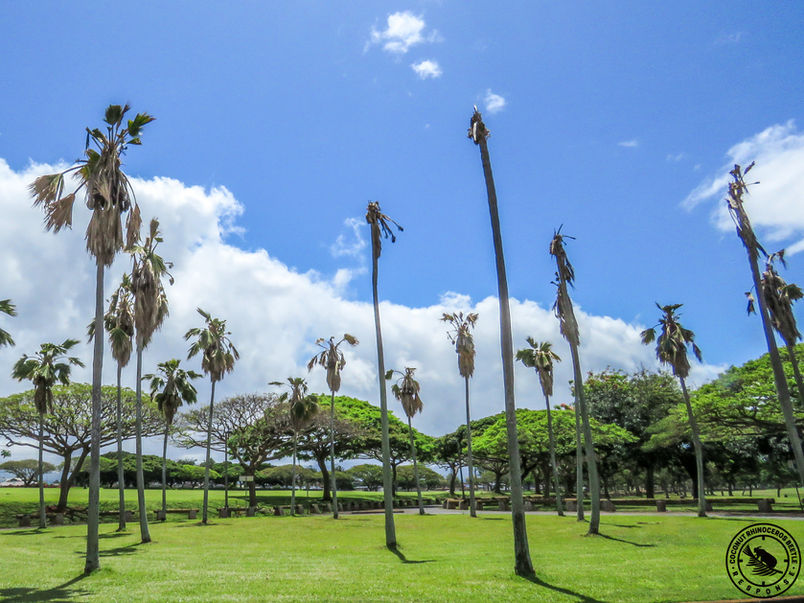COCONUT RHINOCEROS BEETLE (CRB)
The coconut rhinoceros beetle (CRB), Oryctes rhinoceros, was first detected on O'ahu in December of 2013. Native to Southeast Asia, adult CRB feed on emerging palm fronds, causing damage that can often be severe enough to kill the plant.
CRB populations can have devastating impacts on palm species that are foundational to cultural heritage, agriculture, ecosystems, and economies, when out of their native range.

IDENTIFICATION

~2 inches
_edited.png)
Adults
Adult coconut rhinoceros beetle (CRB) are black beetles averaging 2 inches in length with a visible horn. They are night-active and can fly.
Larvae
CRB larvae can grow up to three inches before pupating. These larvae crawl on their side and curl into a "C" shape when handled. As larvae, they live and feed on decomposing plant material. CRB prefer coconut palm green waste but can survive in most decaying plant material.
_edited.jpg)
Coconut rhinoceros beetle life stages observed at 30 degrees Celsius. CRB breeding sites are typically established in decaying plant material like mulch, compost, decomposing stumps, or felled trees. After hatching from eggs, larvae begin feeding on the decomposing material. After growing through three larval stages, called instars, larvae pupate and emerge as an adult, leaving the breeding site. CRB spend roughly 5.5 months growing from an egg to an adult, and about 3 - 5 months as an adult.
LOOK-ALIKES

There are a few look-alike species that are similar to the coconut rhinoceros beetle. This graphic shows some of the key differences in characteristics of the Oriental Flower Beetle (OFB). OFB is a common wide-spread pest that feed on overripe fruit, flower nectar, pollen as well as sap from a variety of plants but their feeding doesn't appear to harm fruiting or flowering productivity.
CRB DAMAGE
CRB feed on and damage coconut, royal, date, and fan palms. If these preferred food sources are unavailable, CRB can shift to feed on other palms and tropical crops. CRB use their front legs and horn to dig into the crown of trees. Then, they use their sucking mouthparts to feed on the juices in the inner spear.




























